Wild Horses: McCullough Peaks Shake Up After the Roundup
July 7, 2010Wild Horses: Delivering Public Comments to the BLM on Adobe Town
August 20, 2010The search for wild horses in Adobe Town and Salt Wells Creek
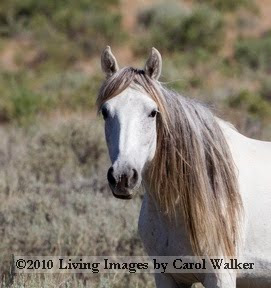
I’ve just returned from a 5 day odyssey – the search for the wild horses in the Salt Wells Creek and Adobe Town Herd Management Areas, home of the largest remaining wild horse herd in Wyoming. Armed with a stack of maps of the area, my binoculars, cameras, and my new reinforced tires and navigation system on my vehicle, I set out to find the 1900 no scratch that now 2500 wild horses that the BLM declares inhabit this area. The land has a rough and beautiful terrain, with grassy meadows, soaring buttes, craggy rock formations, and the red clay on many of the roads.
It is easy to feel dwarfed by the 1.5 million acres of this area. I was going on my knowledge of where horses had been in the past, advice from BLM staff, and others who had seen horses in order to find the horses. In Salt Wells, there are many signs, but in parts of Adobe Town not a single one to be found. I began in Salt Wells Creek, the larger of the two areas, closer to Rock Springs.
The first day I found about 75 horses around a power plant that had several pools of water the horses were using. The horses would water, then move out, leaving room for the next band to come in. The bands were quite large, some 10 – 15, and this is typical in an area that has not been recently rounded up, where the horses have room to spread out and move. They were skittish, and many ran as they saw my vehicle, but I was captivated by a band with two foals, mares, youngsters and a wise old grey stallion. The foals were clay colored, which will soon get lighter and lighter until they are grey like their father.
As I got out of my car, they started getting closer. Then closer. A beautiful dappled grey mare was the boldest, leading her band. At one point, the stallion became a little concerned and walked in front of his mares, but then he started enjoying the game, moving closer and closer. Finally, another band stallion behind his band gave a loud snort, and they moved off.
I drove on further into Salt Wells that day and the next, but did not find any more horses. From my observations, horses like to use roads, and so when there are horses around in an area, there are droppings and stud piles of the stallions marking their territory. Most of the roads I travelled were bare of horse manure, and all the eye could see were cattle, and in some area, oil rigs. I stopped at every high vantage point and overlook to glass. One afternoon, when I should have known better, big black clouds moved in rapidly, and luckily I was on a paved road when a hail storm hit, with rain and hail falling so rapidly that I could not see and pulled to the side. The roads were so wet after that I went back to my motel for the evening, not willing to chance getting stuck in the mud.
I went to Adobe Town the next day, to an area that had held horses in May, but now only old stud piles were on the roads, which were stunningly quiet and empty. Except for more cattle.
The next day I went to the area I know best outside of Baggs, where 7 years ago the valley was full of horses. I did not encounter a single horse. The fences for the cattle area had been reinforced, and there were more cattle. The next day, I went to an area of Adobe Town that I had never travelled in before, and went in circles for an hour trying to find the right road, but at the top of a hill, I spotted horses! They ran when they saw my vehicle approach and I was stunned to see a pinto in the band.
The horses in both areas are predominantly greys, with some roans, sorrels, blacks, very few palominos and buckskins, but this was a very rare pinto. As I drove over the hill, I saw MORE horses. I was so excited to see more than one band – here were two bands grazing. I drove on, and saw band after band in about a 20 mile area in a beautiful valley edged by stark rock outcroppings.
I tried to go up a jeep trail to another area, and was stopped by a huge washout on the road and an impossibly narrow steep hill. There was a huge band in the dry riverbed, watching another band starting to approach. The gorgeous sorrel stallion with flaxen mane and tail moved off over the ridge.
I headed back to this area in the evening, and found a band with two older stallions, a mare and a yearling. They were completely unconcerned with my presence.
As I drove up to an old oil drilling site, I stopped and watched a band of horses move near a waterhole, with cattle all around. As I watched, behind me another band came up, and they were as surprised to see me as I was to see them! The stallion, a handsome young grey, trotted up to me, to get a good look, then passed me, then circled back to his band. I was thrilled by the attention.
I drove on, and at the end of my time there, I enjoyed the sight of an older grey stallion, his grey mare and black yearling, with a very pale palomino colt. They circled me to get a good look, and they were so beautiful as they ran.
The overriding feeling that I was left with from being with the horses was a profound sense of peace, and gratitude for being allowed to share in their world. They are content, healthy, and oblivious to what awaits them in October. The BLM plans to round up this herd and remove most of them.
Here is a slideshow set to music of the horses in this area from my book Wild Hoofbeats: America’s Vanishing Wild Horses:
http://www.youtube.com/watch?v=_mSwvUMt_rI
On this journey, I covered over 350 miles on roads through the two area, and I observed less than 300 horses total. I have heard from other adventurers travelling through this area who have spent more time and seen far less horses, having travelled even further. In my opinion, there are not many more than 1000 horses here. Of course, I did not go to every part of both areas reachable by vehicle – that might take 2 weeks, and many areas are completely inaccessible with a vehicle. But is my driving survey any less accurate than aerial surveys perfomed with funding of the Cattle Growers Association that use modeling to estimate numbers? The BLM estimates of numbers of wild horses in the two areas have swung wildly anywhere between 300 and 3000 with no rhyme or reason over the past 10 years. You can read C. R. McDonald’s “The Wild Horses of Wyoming, AdobeTown/Salt Wells – A Tale of Tallies” which spans the intricacies of the BLM’s convoluted estimation process:
My concern is that this overestimation is deliberate, allowing the BLM to remove not just a portion of the herd, but to decimate it as they did at the Calico roundup.
As I headed home, just outside Laramie on I-80 I spotted a billboard that says “Wamsutter: Home to BP’s largest onshore oilfield.” Wamsutter is just above Adobe Town. I am sure there is more at work here than simply the cattle rancher’s desire to have all the land in these two areas for their cattle.
The Environmental assessment is posted here:
http://www.blm.gov/wy/st/en/info/NEPA/rfodocs/at-sw2010.html
Comments are due by August 16 and MUST be submitted in writing only, no email or fax.
Please comment to the BLM to help save these horses. They deserve to remain free.
Please use the comment form and email by Friday and I will be hand deliveringt them to the BLM office in Rock Springs on Monday August 16:
http://bit.ly/djDsaL
Here is a wonderful article by George Knapp that really says it all about the jeaopardy our wild horses face – “They Execute Horses Don’t They?”:
http://www.lasvegascitylife.com/articles/2010/07/23/opinion/knappster/iq_37053323.txt

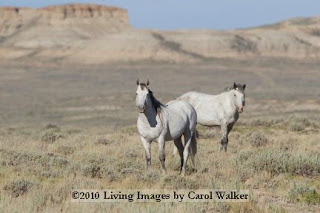
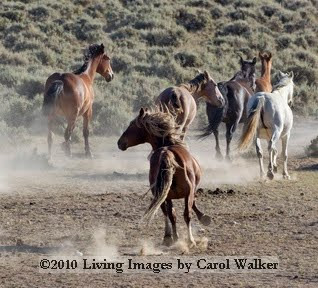
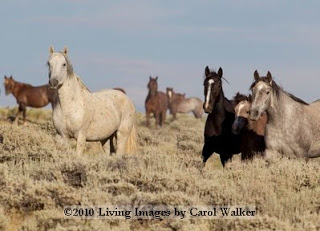
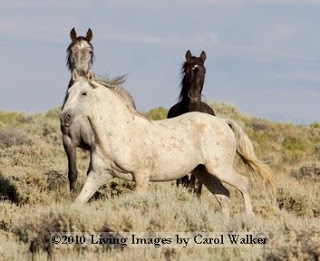
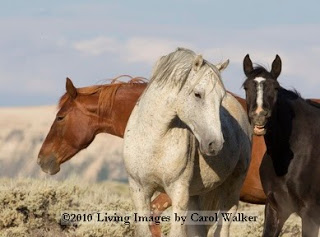
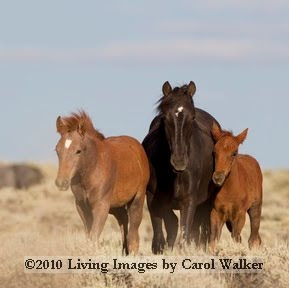
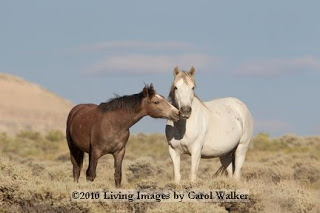
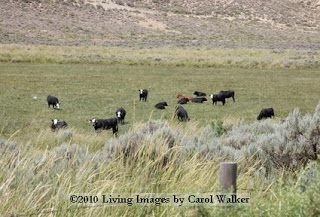
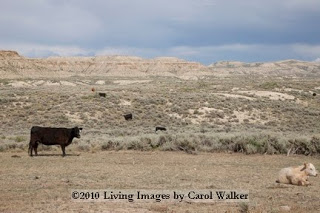
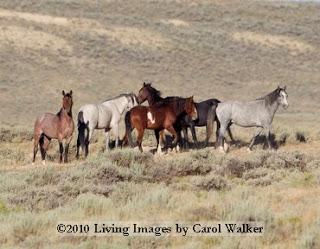
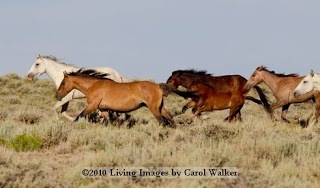
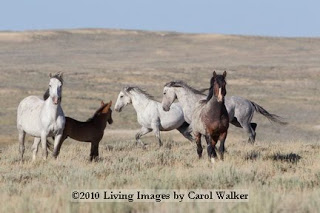
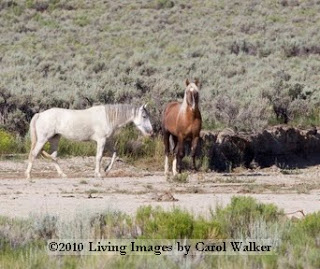
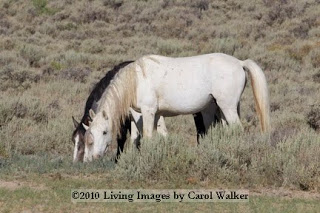
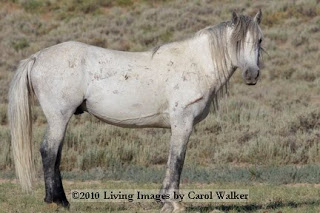
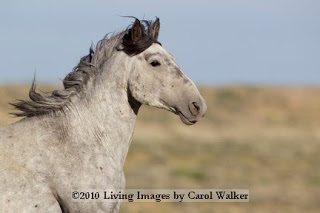
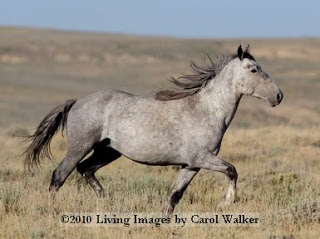
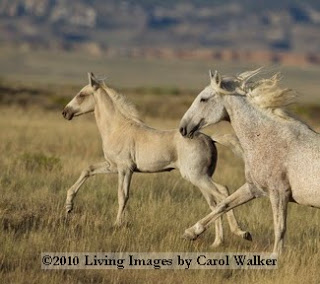
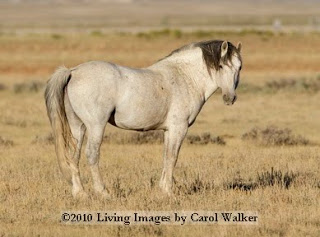
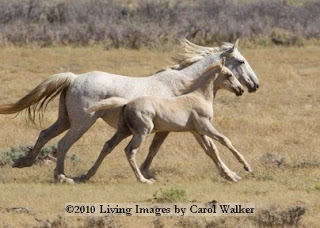
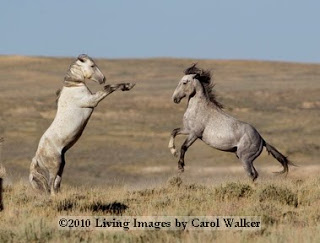
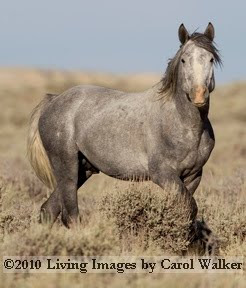
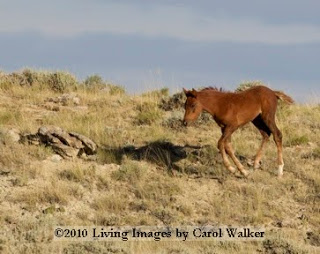
2 Comments
I've been anxious to hear of your findings after meeting you a week ago in Denver, knowing you were leaving for another trip. How incredibly sad that we must ALL take a stand and work to save these incredible beings. We are destroying the few natural/living wonders of this nation. Thank You Carol for your beautiful photos and your loving spirit. God Bless you and our Wild Horses, may we all share in true freedom.
Wow this some awsome photography and a great blog
please check out my blog the wild horse project
http://www.wildhorseproject.blospot.com
i am tryin to help promote the wild horses of new zealand….i recently adopted a wild stallion and mare from nz's latest muster. My goal is to break in and train both horses to help promote and capture the publics heart, with these beautiful animals…